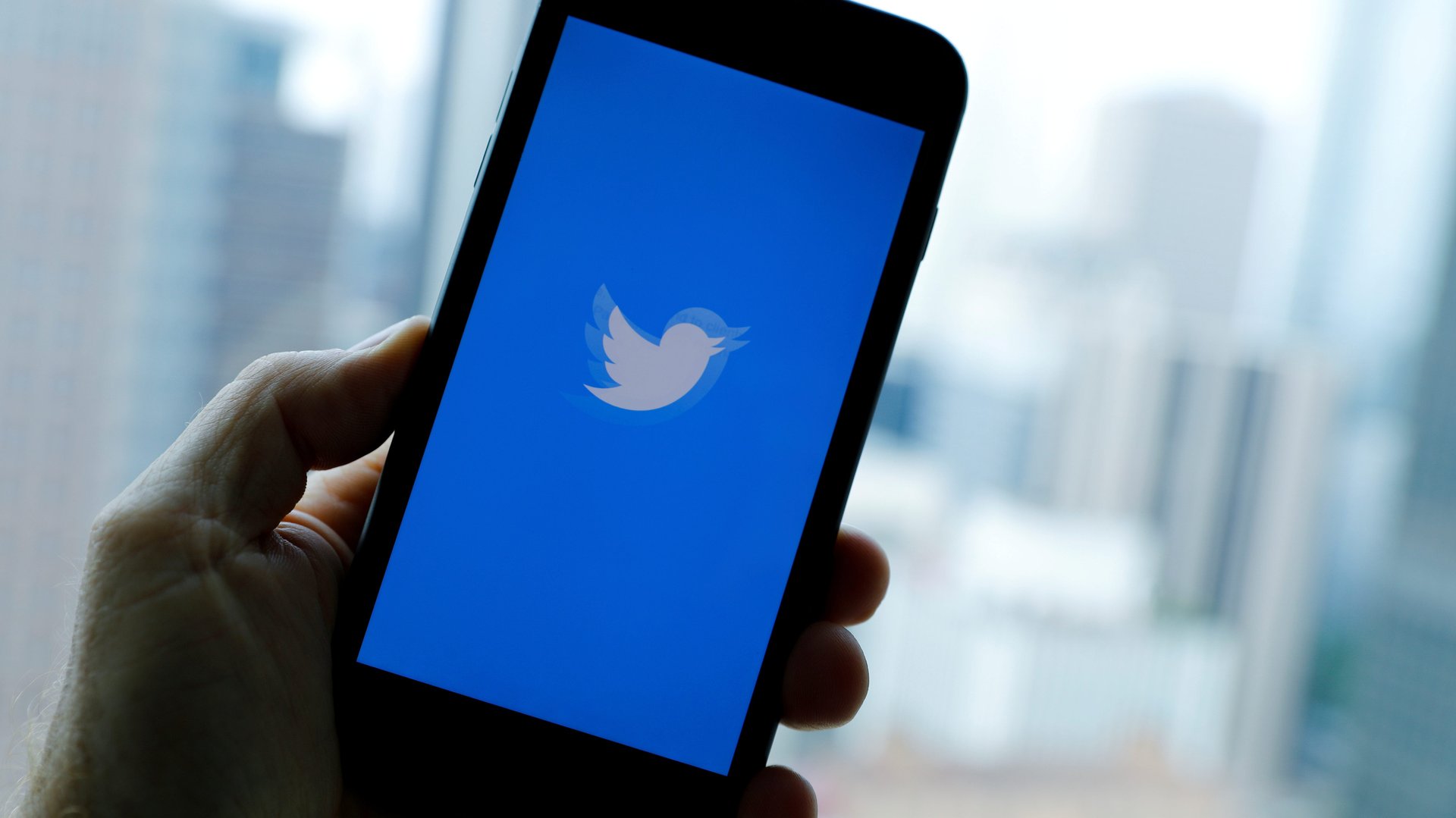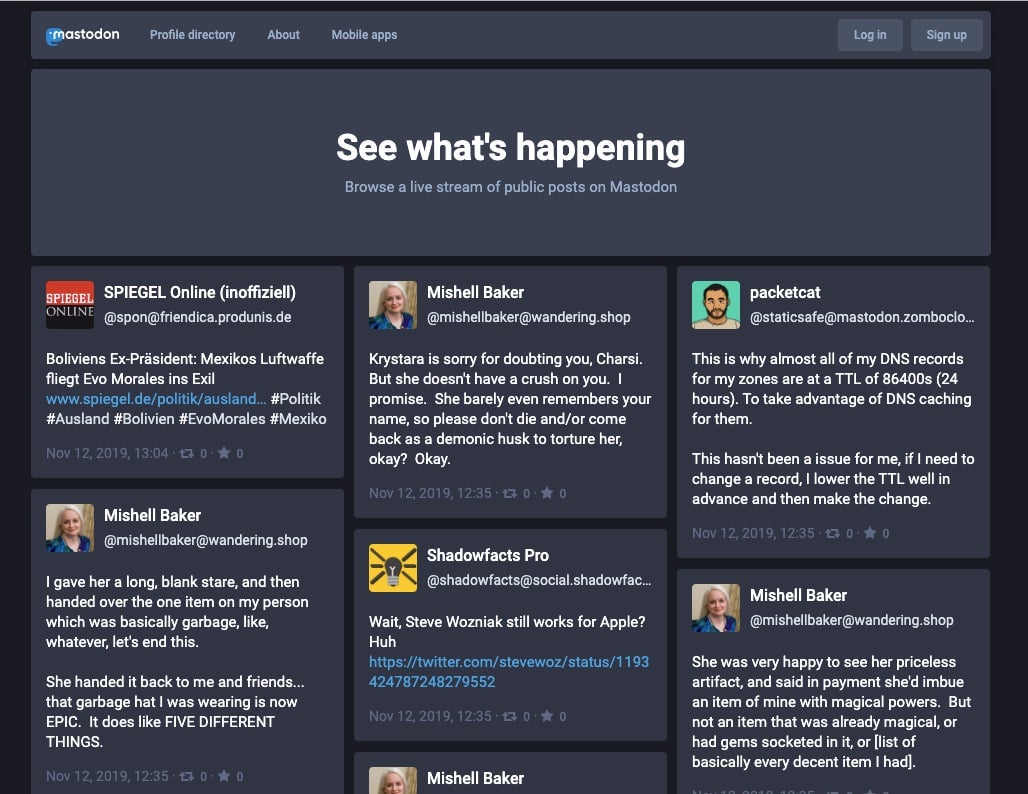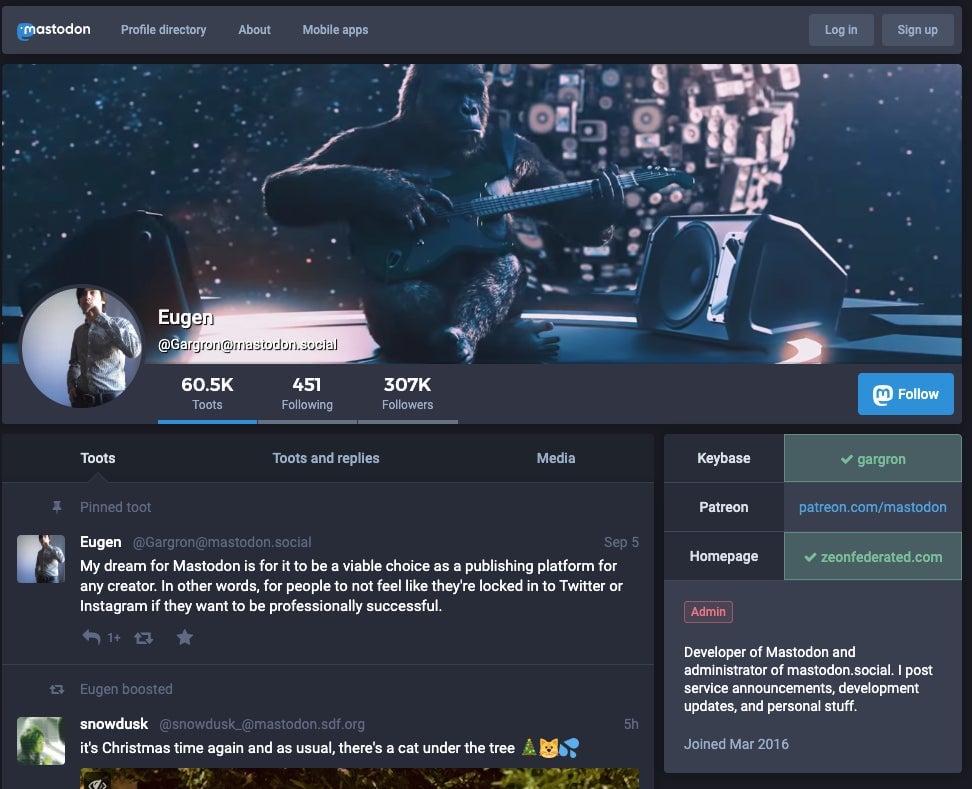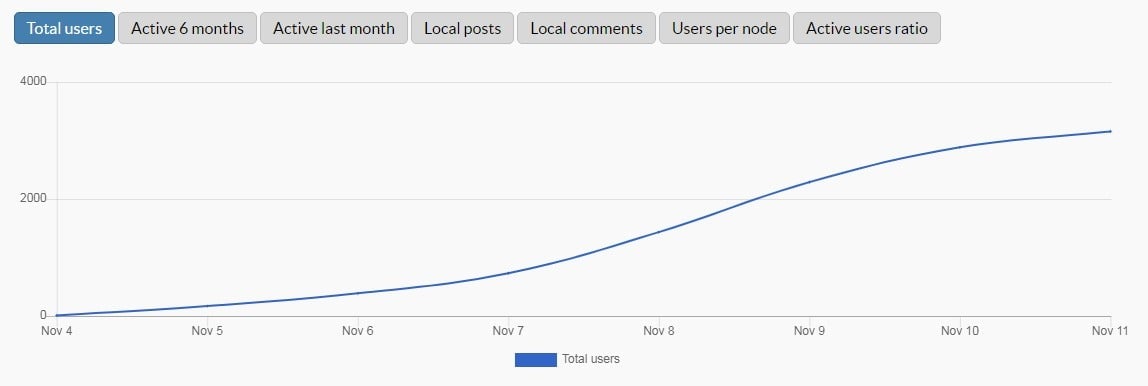This chart from Mastodon’s creator shows just how angry some Indian Twitter users are
There’s something of a movement building up against Twitter India—on Twitter.


There’s something of a movement building up against Twitter India—on Twitter.
A lot of Twitter users are unhappy with the way the microblogging site has allegedly censored content, restricted accounts, and failed to act against trolls. This includes subtle casteism, wherein only accounts of people belonging to the scheduled castes, scheduled tribes, and other backward castes’ are being moderated.
Notwithstanding the veracity of these claims, many Indian Twitter users have decided to shift to the suddenly popular Mastodon, even if on a pilot basis.
Mastodon is being described as the paradisiacal social media platform free from vitriol, abusive trolling, and targeted advertising. Indian intelligentsia on Twitter have been creating accounts on Mastodon in hordes, particularly because they say Mastodon takes reports of abusive content seriously.
For now, Twitter users are testing Mastodon, without abandoning Twitter.
The Mastodon layout has tiles across the screen, displaying “toots,” Mastodon-speak for posts, from users. The handles are similar to Twitter, beginning with “@.” Users’ profile pages are also similar to those on Twitter. The re-tweets are called “boost” here and instead of “liking” a toot, you can “favourite” it by clicking the star icon, like it was on Twitter earlier.


The rebels now toot instead of tweeting, and tweet about tooting.
Mastodon has certainly seen a spike in its numbers. “A new Mastodon node for Indian users has sprung up last week, called mstdn.social,” the platform’s creator, Eugen Rochko, told Quartz.
On mstdn.social, the number of weekly new users shot up to over 26,000 last week, as compared to just around 3,000 earlier, Rochko said. “Moreover, the previous number of weekly active users on mstdn.social was 19,739, whereas last week it was 44,433.”
Mastodon, though, does not track user activity like other social media platforms.
“One point is that Mastodon performs minimal amount of data collection necessary for its operation. This means we don’t track users’ countries, and don’t ask users to fill out country information. However, I can still give you pretty accurate information regarding Indian migration,” Rochko said.

Teetering on the edge
Twitter India seems flustered. Last week, it released a statement in a series of tweets.
However, users like senior journalist Barkha Dutt, who have often been viciously harassed on Twitter, felt this statement was meaningless.
Mastodon, too, responded to Twitter India’s statement—on Twitter.
In another response, the new platform also cheekily responded to the older microblogging site with “Ok boomer,” which swiftly became shorthand for people to call out conservative views on social media.
How does Mastodon work then?
Many million Twitters
Mastodon is a decentralised, open-source social media platform. It is not owned by any single person or company. “Imagine Twitter being broken up into 1,000 parts, and users signing up for one of the 1,000 parts they wish to, and each part communicating with each other,” Pratik Sinha, co-founder and editor of fact-checking platform AltNews, told Quartz.
Each user signs up for an “instance” or a “node,” based on one’s content and privacy preferences. An instance or a node is essentially a sub-universe within Mastodon, where you can meet, follow, and interact with like-minded people. The closest comparative in the non-Mastodon world would be chat rooms of yore, or WhatsApp groups today—but on a public, larger scale.
An instance can be as small as your own family, and the data are owned by the user and not Mastodon. “Data are stored on the instances that you own. It could be a home server, or on a server with a hosting service provider,” said Sinha. This, in essence, ensures privacy, which has become a crucial talking point for many users on social media platforms.
Mastodon is, thus, a part of the free internet universe, where tools like PeerTube and Matrix position themselves as decentralised, private, and secure alternatives to Alphabet-owned YouTube and Facebook-owned WhatsApp, respectively.
Echo chambers
Each of Mastodon’s nodes or instances are independently moderated according to individual policies. Yet, two nodes can communicate with each other, even if their content moderation policies are at odds. “It is like two states can have two different political parties, but the rules of bureaucracy which allows them to talk to each other still work,” explained Sinha.
However, two problems emerge immediately. One, freedom of expression could also mean freedom to spread hate speech, especially when the content policy of a particular node allows it.
For instance, a node called Gab became notorious for spreading white supremacist agenda. “But what other Mastodon servers have done is, they have blocked this instance of Mastodon and the server of Gab,” Sinha added.
The other issue is of virtual echo chambers, where one sees and hears only what one wants to. That is an aspect that only time will clarify.
With inputs from Kuwar Singh.